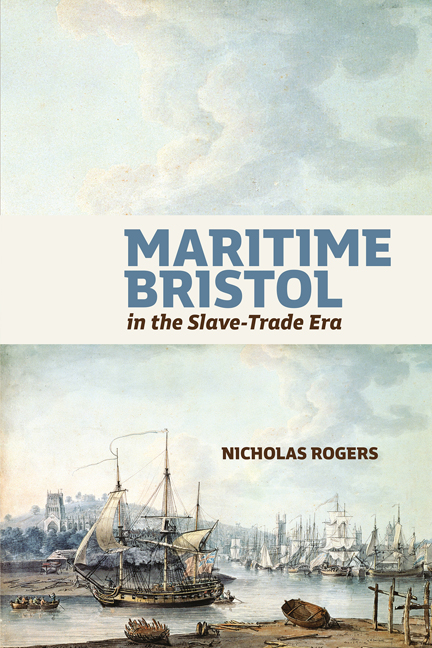Book contents
- Frontmatter
- Dedication
- Contents
- List of Figures
- Acknowledgments
- List of Abbreviations
- Introduction: High Tides, Atlantic Waters
- 1 The Pilots of Pill
- 2 The Hazards of the Bristol Slave Trade
- 3 Slave-ship Sociology
- 4 The Unfortunate Shipwright, or, the Trials of Robert Barker
- 5 Mutiny and Murder on Bristol’s Long-haul Ships, 1720–70
- 6 Bristol Privateering in the Mid-eighteenth Century
- 7 The Impressment of James Caton, 1779
- 8 New York in Bristol: the Crugers
- 9 The Politics of Abolition in Late Eighteenth-century Bristol
- Bibliography
- Index
6 - Bristol Privateering in the Mid-eighteenth Century
Published online by Cambridge University Press: 08 May 2024
- Frontmatter
- Dedication
- Contents
- List of Figures
- Acknowledgments
- List of Abbreviations
- Introduction: High Tides, Atlantic Waters
- 1 The Pilots of Pill
- 2 The Hazards of the Bristol Slave Trade
- 3 Slave-ship Sociology
- 4 The Unfortunate Shipwright, or, the Trials of Robert Barker
- 5 Mutiny and Murder on Bristol’s Long-haul Ships, 1720–70
- 6 Bristol Privateering in the Mid-eighteenth Century
- 7 The Impressment of James Caton, 1779
- 8 New York in Bristol: the Crugers
- 9 The Politics of Abolition in Late Eighteenth-century Bristol
- Bibliography
- Index
Summary
The mid-century decades were Bristol's golden age of privateering. In the years 1738 to 1783, over 580 vessels were launched to maraud enemy shipping, the high point being during the Seven Years’ War when Britain engaged the French in Atlantic waters and expanded its territory in North America and the Caribbean. The newspapers of the day are full of accounts of the ventures of the privateers, their battles, captures, and disasters, to a point that some historians have typified the era as the age of plunder.
Much of this activity was transcribed in the style of derring-do, a Chaucerian phrase meaning ‘daring to do’, which by the eighteenth century exemplified the courage and masculinity of the British sailor taking on its traditional foes. Although some historians continue to regard privateering as little more than legalized piracy, privateering was subject to quite specific rules of reprisal. Unlike piracy, it was not regarded as ‘an afront to all mankind’. The days when the boundaries between piracy and privateering were blurred by the willingness of the state to sanction the pillaging of the Spanish Main and open new avenues of commerce were over. Private men-of-war were commissioned by the state; their owners or captains had to apply for licences to attack enemy vessels, whether specially designated privateers or merchantmen; and the conquests had to be officially registered or ‘condemned’, to use contemporary legal parlance, in the Admiralty courts or adjunct jurisdictions.1 Royal proclamations and statutes laid out the division of spoils for officers and men in naval vessels, with the Admiralty taking a share of 10 per cent before 1708 but none thereafter. Private men-of-war were subject to more flexible arrangements, but they had to be set down in legal contracts, and the captains of these vessels had to register the names of crew members who were entitled to a share, just in case they felt shortchanged by the agents who managed the prizes.
Understandably and predictably, there were grey areas of privateering activity that were open to abuse. A Caroline statute allowed captains and seamen the right to pillage ‘all such Goods and Merchandizes’ as could be found ‘upon and above the gun deck’, a right that potentially cut into legitimate prizes and encouraged embezzling.
- Type
- Chapter
- Information
- Maritime Bristol in the Slave-Trade Era , pp. 125 - 155Publisher: Boydell & BrewerPrint publication year: 2024

